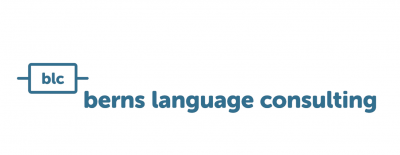Text creation and text evaluation. The new standard at a glance.
A guest blog by Ursula Reuther (Congree)
As if it were not challenging enough for editors to write specialist texts in such a way that they are correct and understandable in terms of content and language, and at the same time address the intended target group correctly – no, now the texts should also be written in a translation-oriented manner. You can find out what exactly this means and how this requirement can be met in the following article.
Translations are now as much part of the publishing process of technical documentation as the authoring process itself, and must therefore be planned and calculated with appropriate human and financial resources.
Not the least because the translation of some content is even legally required, such as in the Product Liability Act.
When there is talk of translations into other languages, the GIGO principle is also often mentioned.
GIGO stands for: Garbage in – garbage out.
In other words, if the source text, i.e. the input for the translation, is already deficient and has shortcomings, the lack of quality will also be reflected in the target language, which in turn leads to poorly understood or even incorrect content in the target language.
Now, with the volume of translations increasing and the costs involved being significant, it is only logical to pay more attention to the quality of the text in the source language.
In short, the quality of the translation stands and falls with the quality of the source language text.
So what is more obvious than considering criteria for measuring or assessing the quality of the source text in terms of its translatability.
This idea was pursued by a group of interested people who were connected to the subject of “translation” in different ways – and the result was the DIN standard 8579 “Translation-oriented writing – text creation and evaluation”.
Over the course of two years, a working group at the DIN Institute met people from a wide variety of fields in which translation plays a role: University representatives represented the teaching of translation, translators contributed their practical experience, technical editors represented the source text, language service providers shared their experience from translation projects and Congree, as a software manufacturer of language checking programs, was able to provide valuable input from customer projects and in terms of the machine testability of criteria.
Thus, various perspectives have been incorporated into the standard, which are also reflected in the topics dealt with there.
At the beginning, the general features and requirements for technical texts to be translated are discussed.
What is important?
An important aspect, which is particularly important in the machine translation of texts, is the formatting of the texts.
Reason enough to dedicate a separate chapter in the norm to this topic, which summarizes the “Dos and Don’ts”.
An important linguistic aspect, which is also discussed in a separate chapter, is terminology.
Typical pitfalls and tips on how to avoid them are shown using examples.
In this way, misunderstandings, content problems, additional costs and even incorrect translations can be avoided during translation.
Another chapter is dedicated in great detail to the linguistic aspects in the form of grammar, syntax and style.
Among other things, it deals in more detail with the structure of sentences, the choice and formation of words, the avoidance of ambiguities and also with gender-appropriate language.
A further chapter then deals with the topic of cultural neutrality, which of course also plays a role in the translation and must not be ignored.
In addition to the purely linguistic and textual aspects, another chapter also looks at the translation process with its processes and framework conditions, in which it is enormously important that there is agreement between the client and the contractor of the translation with regard to formats in the source and target languages, supplied data and quality assurance.
A final chapter looks at how and which specific criteria can be used to assess how appropriate a source text is to be translated.
For this purpose, the standard contains an evaluation matrix in tabular form, which recommends relevant test criteria based on the information developed in the previous chapters, both for human translation and for translation with CAT tools, but also for pure MT applications.
The review and, ultimately, compliance with these criteria should result in better, error-free, cost-effective, faster and more professional translations.
This saves all those involved in the translation process time, money… and nerves.
So far, so good.
And now?
This standard also gives translation service providers – whether individuals or companies – a tool that allows them to agree on contractual frameworks with their clients, whether in terms of quality assurance or delivery content and formats.
Finally, the question of the machine testability of the criteria to be applied remains.
Of course, all points cannot be checked with software-based linguistic tools, even if these test methods work with linguistically intelligent methods.
For example, cultural circumstances, logical contexts or text pragmatics cannot be checked with a language test program.
But a variety of the criteria that make up a translation-friendly text can be verified by linguistically intelligent language checkers, such as the Congree Authoring Server.
A text that has been checked and found to be well is then a very good prerequisite for its translation, especially with regard to automated further processing using translation memory or MT system.
In the latter case, the application of such software to the text to be translated can not only have a positive effect on the actual translation, but can also be used to optimize the training material required for MT and thus indirectly positively influence the translation result.
If you would like to learn more about the standard, its content and use, as well as possible applications, we invite you to attend our webinar “Writing in accordance with translation requirements – DIN 8579 says how to do it” on September 29, 2022 .
Go to the webinar
Ursula Reuther – Vita

Ursula Reuther works at Congree, studied Applied Linguistics and Translation and has been working in the field of machine language processing and language technology in development and project management since 1986.
Her focus is on language standardization as well as controlled language and terminology.





